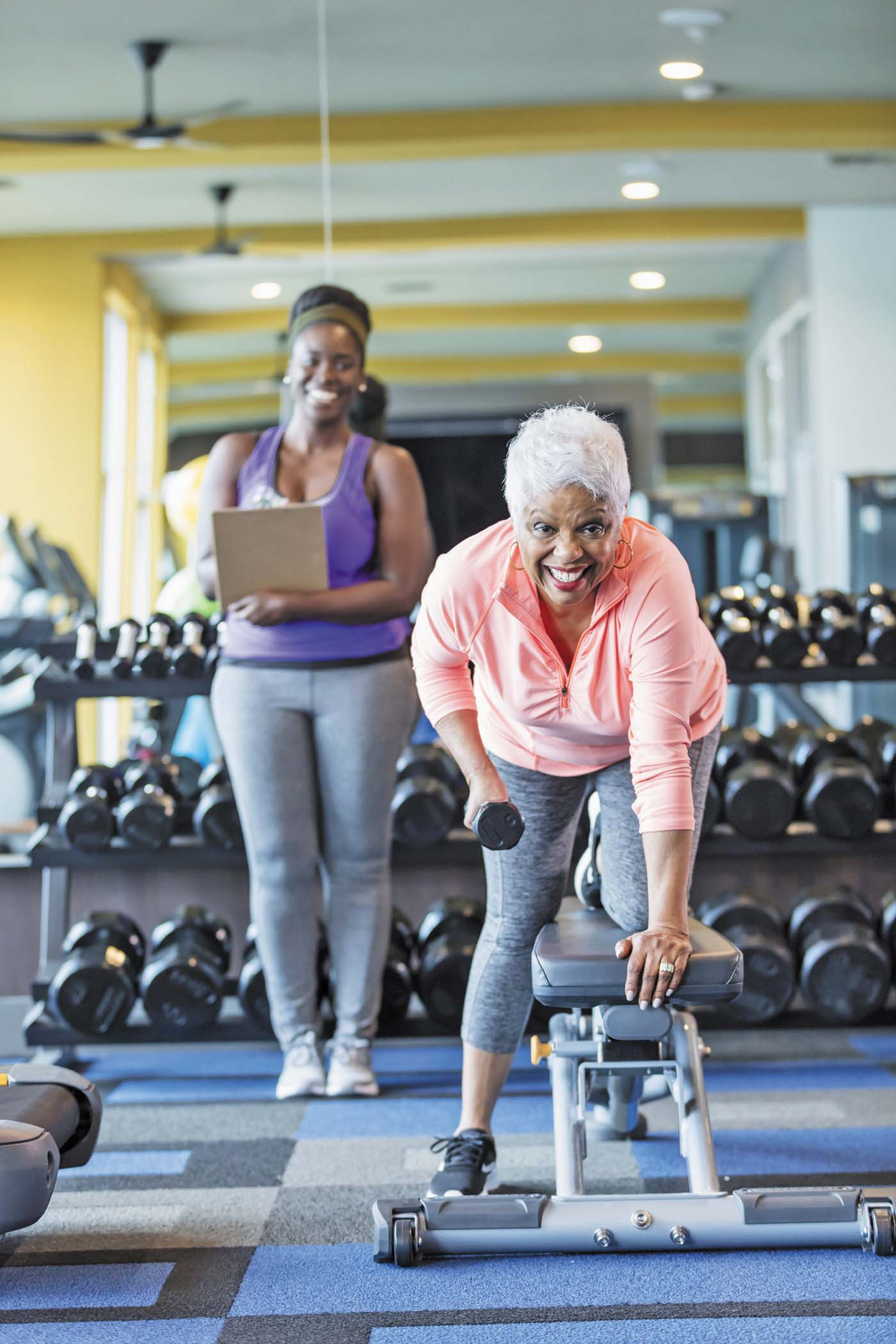
5 timeless habits for better health

What are the symptoms of prostate cancer?

Is your breakfast cereal healthy?

When pain signals an emergency: Symptoms you should never ignore

Does exercise give you energy?

Acupuncture for pain relief: How it works and what to expect

How to avoid jet lag: Tips for staying alert when you travel

Biofeedback therapy: How it works and how it can help relieve pain

Best vitamins and minerals for energy

Should you take probiotics with antibiotics?
Physical Activity Archive
Articles
Why women take the fall
Falls are the leading cause of injuries and accidental deaths among Americans 65 and older. Women fall more often than men and are far more likely to show up at an emergency room because of a fall. Women are especially vulnerable to falling due to weaker bones, lower muscle mass, higher rates of incontinence and antidepressant use, and a tendency to multitask. People can reduce their fall risk by doing strength and balance exercises, getting regular vision and hearing exams, reviewing their medications, and keeping floors clutter-free.
About 20 minutes of exercise may offset risk of sitting all day
Compared with people who sit for eight hours daily, people who sit more than 12 hours a day may be more likely to die prematurely. But just 22 minutes of brisk walking or similar activity daily may offset that risk, according to a 2023 study.
Seeking fitspiration on social media?
Fitspiration describes social media posts intended to inspire physical fitness and promote health. But is this type of motivation helpful? A recent study looked deeper into the trend.
7 things your personal trainer wants you to know
It takes more than a weekly session with a personal trainer to maximize exercise benefits. Personal trainers recommend that people exercise in between training sessions; do strength training at the beginning of a workout; alternate the muscle groups that get a workout; challenge each muscle group with a variety of exercises; stretch regularly; eat a healthy diet to fuel the body; and exercise purposefully, with a strategic approach that moves them closer to their exercise goals.
Time for your annual health review
The start of a new year is always a great opportunity for people to re-engage with their health. One of the first steps is to conduct a personal health review. It's a way to measure where a person's health stands now, outline the goals, and create a strategy to reach them. A personal health review follows a three-step process: gathering all current health information, listing short- and long-term goals, and sharing everything with a doctor during a scheduled wellness visit.
Should you worry about your waistline?
A large waistline — 35 inches or more in women or 40 inches or more in men — can signal the presence of visceral fat. Located deep within the abdominal cavity, visceral fat pads the space around the organs and is closely linked to cardiovascular problems. Getting regular exercise (both aerobic and strength-based) and following a healthy, reduced-carbohydrate diet can help reduce visceral fat. Time-restricted eating may also help.
Why you should "Walk with a Doc"
Walk with a Doc is a nonprofit program founded by a cardiologist that sponsors free, doctor-led walks in mostly outdoor venues (usually public parks) in 560 sites across America. The walks last 30 to 90 minutes, are usually held once per month, and include a five-minute talk about various health topics by the physician. In addition to the exercise and education, participants benefit from the camaraderie and time spent in nature.
Everyday activities count as exercise, but intensity matters
In a 2023 study, people who did bouts of daily activities, such as taking stairs, mopping the floor, and gardening, that lasted from one to 10 minutes had a lower risk for heart attacks and strokes compared with those who were active for less than a minute.
How to lower your dementia risk
An estimated 3% of adults ages 65 and older currently have dementia, and that proportion rises substantially as people age. The most convincing evidence for reducing one's risk relates to the basic foundations for an overall healthy lifestyle: aerobic exercise, a plant-based diet, and quality sleep. Aerobic exercise helps reduce the buildup of toxic proteins in the brain and improves blood flow, a plant-based diet can manage inflammation, and quality sleep helps the brain clear out harmful proteins.
Long hours sitting can raise dementia odds despite exercise
A 2023 study suggests that people who average 10 or more hours sitting each day face higher risks of dementia than those who sit less, and those risks persist even if they exercise.

5 timeless habits for better health

What are the symptoms of prostate cancer?

Is your breakfast cereal healthy?

When pain signals an emergency: Symptoms you should never ignore

Does exercise give you energy?

Acupuncture for pain relief: How it works and what to expect

How to avoid jet lag: Tips for staying alert when you travel

Biofeedback therapy: How it works and how it can help relieve pain

Best vitamins and minerals for energy

Should you take probiotics with antibiotics?
Free Healthbeat Signup
Get the latest in health news delivered to your inbox!
Sign Up











